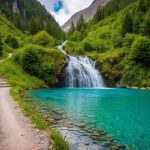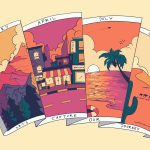DIY Travel Photography: Mastering Stunning Vacation Photos
Capturing stunning vacation photos can become a cherished part of any trip. Whether exploring urban landscapes or natural wonders, anyone can enhance their travel photography skills with a few simple tips. DIY Travel Photography allows individuals to infuse their creativity into their memories, making each snapshot a work of art.
Travel photography is not just about having a high-end camera; it’s about the photographer’s eye. By paying attention to light, composition, and planning the shot, even a smartphone can capture breathtaking images. Understanding how to frame a shot and use natural light effectively can transform ordinary scenes into extraordinary memories.
Taking the time to experiment and have fun with different angles and perspectives can lead to surprisingly beautiful shots. Embracing the creative process and practicing regularly makes photography a more enjoyable and rewarding part of the travel experience. The joy of DIY Travel Photography lies in the ability to create unique, lasting memories that truly reflect personal experiences and adventures.
Understanding the Basics of Travel Photography
Capturing stunning travel photos requires a proper grasp of composition, lighting, and specific photography techniques. Mastering these basics will enable any aspiring travel photographer to take engaging and memorable shots.
Composing Your Shots
Good composition is key to compelling travel photos. The rule of thirds is a foundational principle, suggesting the division of an image into nine equal parts using two horizontal and two vertical lines. Placing the subject along these lines or at their intersections naturally draws the viewer’s eye.
Another effective technique is to use leading lines, such as roads or rivers, to guide the viewer’s attention through the photograph. Framing the subject with natural elements, like archways or trees, can add depth and context to the shot.
Mastering Lighting
Lighting can dramatically influence the mood and clarity of a photograph. Natural light, especially during the golden hours (shortly after sunrise and before sunset), tends to produce warm and soft tones that enrich the photo. Direct sunlight around midday, however, can create harsh shadows and contrasts.
Overcast days can provide diffuse light, reducing harsh shadows and giving a softer quality to the images. When shooting indoors or in low light conditions, manual mode on a camera allows for better control over exposure, ensuring that the pictures are neither too dark nor too bright.
Exploring Photography Techniques
To elevate travel photography skills, understanding various techniques is essential. Manual mode offers the greatest flexibility, letting the photographer adjust settings such as shutter speed, aperture, and ISO. This control is crucial for tackling different lighting conditions and motion situations.
Experimenting with different perspectives, such as low-angle or high-angle shots, adds variety and interests to the photographs. Burst mode is useful for capturing the perfect moment in action scenes, while time-lapse photography can convey the passage of time in a unique way.
Familiarity with these techniques helps in adapting to diverse situations, ensuring that travel photographs are consistently stunning and expressive.
Assembling Your Photography Gear
Proper gear selection is crucial for successful travel photography. Efficiently packing and choosing the right equipment can make a significant difference.
Choosing the Right Camera
Selecting the appropriate camera is foundational. DSLR and mirrorless cameras are the most preferred options because of their versatility and image quality.
DSLRs offer a broad selection of lenses and robust battery life, making them suitable for extended shoots. Mirrorless cameras, lighter and more compact, are ideal for travel enthusiasts who value portability without sacrificing quality.
When traveling, weight and space are considerations. Lightweight cameras, especially mirrorless models, are more convenient for backpacking or long hikes. Travel photographers should choose a camera that matches their skill level but leaves room for growth. Beginners may start with entry-level models, while more experienced photographers might opt for mid-range or professional options.



